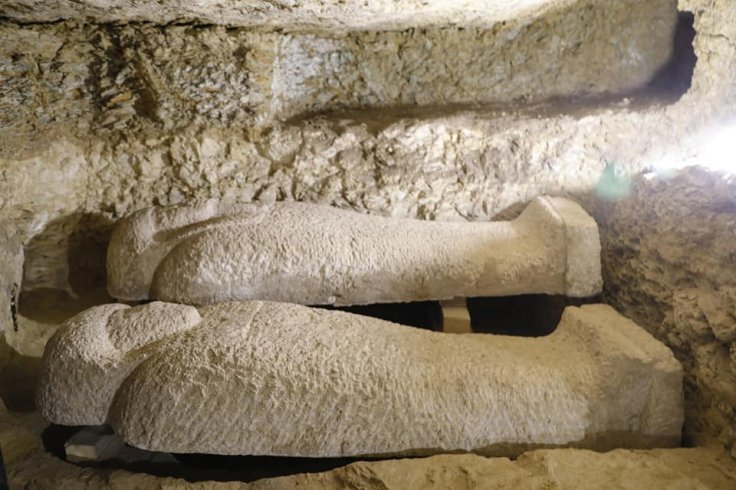Egypt has a rich ancient history that caused excitement among the archaeologists. From Alexandria to Lahun, over the years researchers tried to find out long lost evidence representing ancient Egypt. Since 2018 several discoveries have been made in Minya, a city of Egypt including a cachette of mummies, tombs full of sarcophagi and funerary jewellery as well as ushabti figurines and funerary masks.
Recently archaeologists discovered communal tombs for high priests at the Al-Ghoreifa area in Tuna El-Gabal archaeological site of the Egyptian city, Minya. The Minister of Tourism and Antiquities Khaled El-Enany has revealed the discovery of the tombs, which were dedicated to high priests of the Egyptian god Djehuty and senior officials in the fifteenth nome of Upper Egypt and its capital, Ashmunin.
Minya archaeological finding

In 2019, a pharaonic tomb containing 50 mummies was discovered in Minya, south of Cairo. Egyptian archaeologists found these mummies, including 12 children, inside four nine-metre deep burial chambers, which were cut out of the rock, probably belonged to a middle-class family who were alive during the Ptolemaic period. But after this recent finding, El-Enany said, "Minya is set to be put on Egypt's tourist's map for its distinguished archaeological sites."
The recent discovery of the communal tombs was made during an archaeological mission led by Mustafa Waziri, who is the secretary-general of the Supreme Council of Antiquities. While explaining the findings he said that they found all these 16 tombs with about 20 sarcophagi and coffins of various shapes and sizes.
The finding also includes five anthropoid sarcophagi, which are made of limestone and engraved with hieroglyphic texts, as well as five wooden coffins in good condition. Some of these coffins are found with proper decoration which includes names and titles of their owners. During the ongoing work by the archaeological mission, more than 10,000 ushabti figurines made of blue and green faience were found at the site and most of them are engraved with the titles of the deceased.
The excavation
The archaeological mission also found over 700 amulets of various shapes, sizes and materials. Excavators found amulets of the gods and pure gold amulets, as well as an amulet having the shape of a winged cobra. Ancient pottery vessels, used for funerary and religious purposes, were discovered along with coffin and stone cutting tools, such as wooden hammers and baskets made of palm fronds.
Eight groups of painted canopic jars made of limestone with the names of their owners who bore the title of the singer of the God Thoth were discovered. The archaeologists also found stone dough without any inscriptions, representing the four sons of Horus.
Archaeologists unveil sarcophagus
As per Waziri, one of the stone sarcophagi, which was found at the excavation site, belongs to the son of Psamtik, who used to be the head of the royal treasury in ancient Egypt. While explaining the second sarcophagus, the researchers stated that it belongs to Horus, the god of the sky. Below the sarcophagus, there are inscriptions revealing the deceased's titles.
Along with the sarcophagus of Epy, archaeologists found well-polished limestone made sarcophagus of the Djed of Djehuty Iuf ankh, which is considered one of the most important coffins discovered during this season because of the titles inscribed on the sarcophagus lid. The fifth one has hieroglyphic inscriptions showing the surnames of the deceased.









